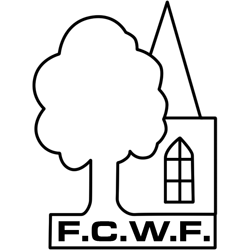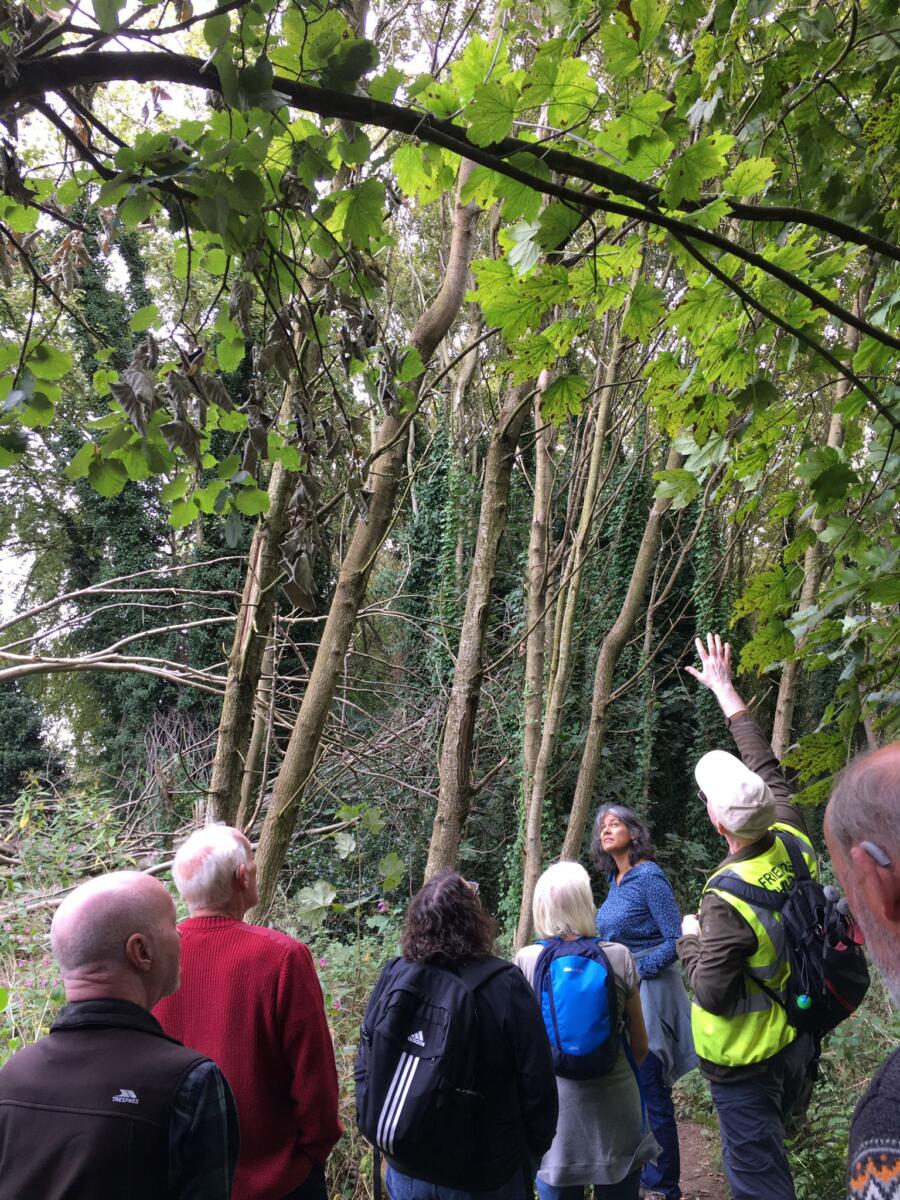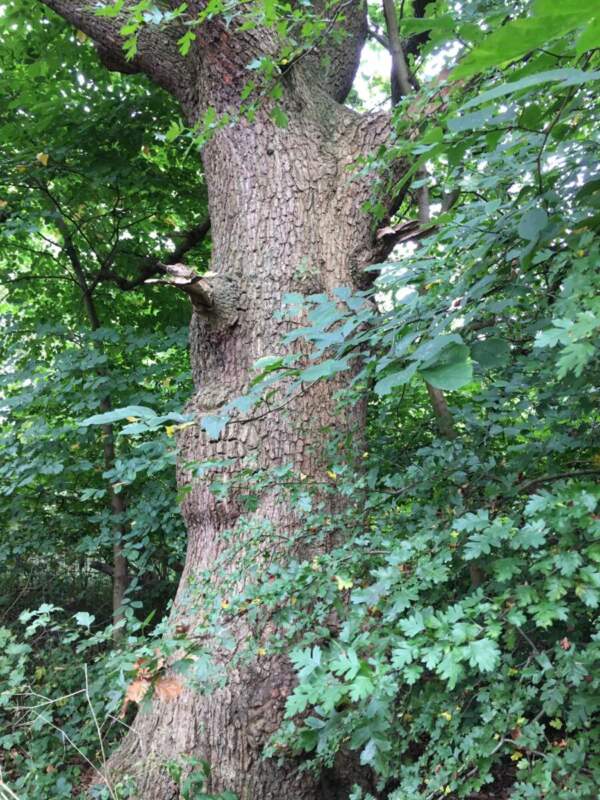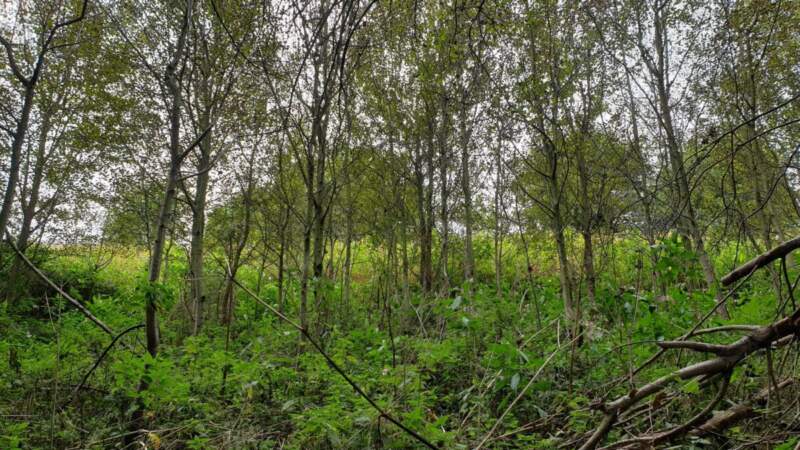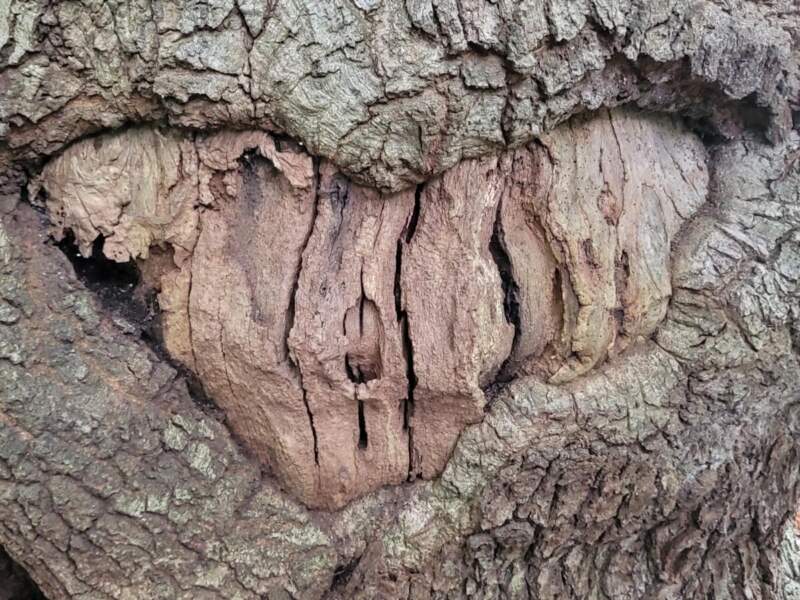The first of our Members-only events was a guided walk on the Trees of Childwall Fields led by Andrew Scott.
Andrew, a self-confessed tree freak and a verifier for the Woodland Trust’s Ancient Tree Inventory, is a member of the FCWF committee who has been surveying the trees of the nature reserve*.
Here Andrew describes the walk:
Childwall Woods are justifiably well known for the size, age and splendour of their trees, and the beauty of the spring bluebells. The trees of Childwall Fields are less well known and are interesting for different reasons. Like their larger neighbours in Childwall Woods, the trees of Childwall Fields are also a man-made planting. Most of them are young, less than 40 years old, but they are surprisingly diverse, with over 50 species of trees to be found here.
Our group of 12 with – appropriately – Willow the dog met in fine weather on Saturday at Childwall Lane entrance and set off along the path beside Childwall Lane to view our 2 largest ash trees, a grove of aspen and a couple of unusual lime trees, small leaved and Crimean.
There is a lovely old oak tree here – the oldest on the reserve – guarded by a group of Wych elms.
Climbing up the slope through the hazels to the lower field, we examined the mixed plantation sitting on top of the old rubbish dump that lies beneath the 3 fields and discussed some of the issues in managing such plantings.
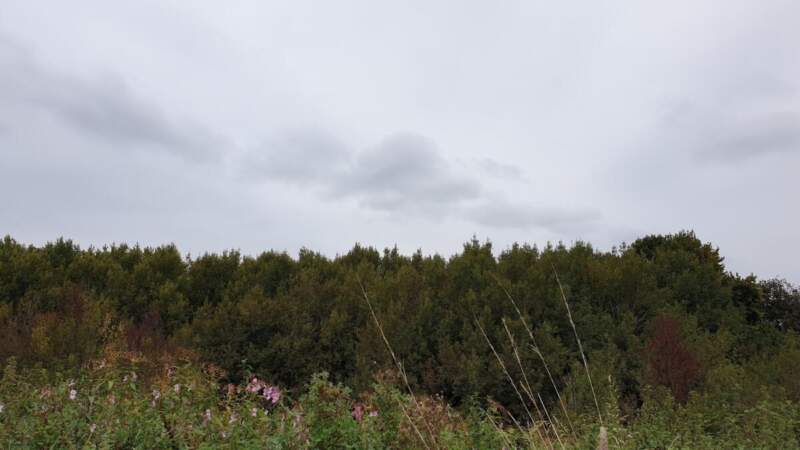 The aspen grove (above) is particularly interesting as this is spreading by root suckers up the slope and along the Childwall Lane path.
The aspen grove (above) is particularly interesting as this is spreading by root suckers up the slope and along the Childwall Lane path.
Andrew described how a single aspen tree has been found in Utah – with 40,000 trunks and a single root system! The Pando** is believed to be the world’s largest organism and covers 43 hectares (3x the size of CWF!). Although the individual trunks only live to 100 years, the whole community is thought to be 14,000 years old.
We returned to the concrete path via an intriguing collection of different willows and walked up to the top field. Here we examined the group of tall poplars that dominates this area, and looked finally at how the alder and oak trees have responded to cutting – an attempt this year to restore the top field meadow – by regrowing at a ferocious rate!
The walk was well received and will no doubt be repeated. Do join us next time.”
* https://www.fcwf.org.uk/flora/the-trees-of-childwall-fields/
** https://en.wikipedia.org/wiki/Pando_(tree)
Photographs – P Leadbeater, B Cameron, Cherie Jones

